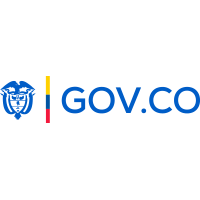Tecnología en Gestión Empresarial – Presencial

Inscripción en Línea Estudiantes Nuevos
Código SNIES: 2063
Resolución 007773 del 06 de mayo de 2022 Ministerio de Educación Nacional “Por medio de la cual se resuelve la solicitud de renovación de Registro Calificado y aprobación de las modificaciones del programa de Tecnología en Gestión Empresarial del Instituto Superior de Educación Rural – ISER, ofertado en modalidad presencial en Pamplona, Norte de Santander” – Por el término de 7 (siete) años
Nombre del Programa: Tecnología en Gestión Empresarial
Título que Otorga: Tecnólogo en Gestión Empresarial
Duración: 6 (seis) Semestres
Lugar de Desarrollo: Pamplona, Norte de Santander
Metodología: Presencial
Tipo de Formación: Tecnológica
Número de Créditos Académicos: 92 (noventa y dos)
Costo de Matrícula: 1 SMMLV
Perfil Profesional
El Tecnólogo en Gestión Empresarial será un profesional con iniciativa emprendedora, innovador, creativo, capacidad investigativa, trabajo en equipo, capaz de apoyar a la gerencia en la optimización de recursos que generen desarrollo con la aplicación de conocimientos integrales en las áreas de la empresa que la afecta, proponiendo alternativas de solución en la toma de decisiones, desarrollando en forma descriptiva los diferentes procesos administrativos, con capacidad de emprender acciones para crear nuevas empresas o fortalecer y consolidar las existentes.
Perfil Ocupacional
La orientación y el desarrollo del plan de estudios, la formación profesional básica y socio-humanística le permiten al Tecnólogo en Gestión Empresarial del ISER desempeñarse en diferentes campos de la administración como:
Gestor de su propia empresa
Asistente Administrativo
Asistente de Gerencia.
Asistente de las áreas de Calidad, Recursos Humanos, Compras e Inventarios,, Logística, Producción, Servicios
Coordinar actividades en cuanto a logística y marketing mix en función de lograr los objetivos de la empresa.


